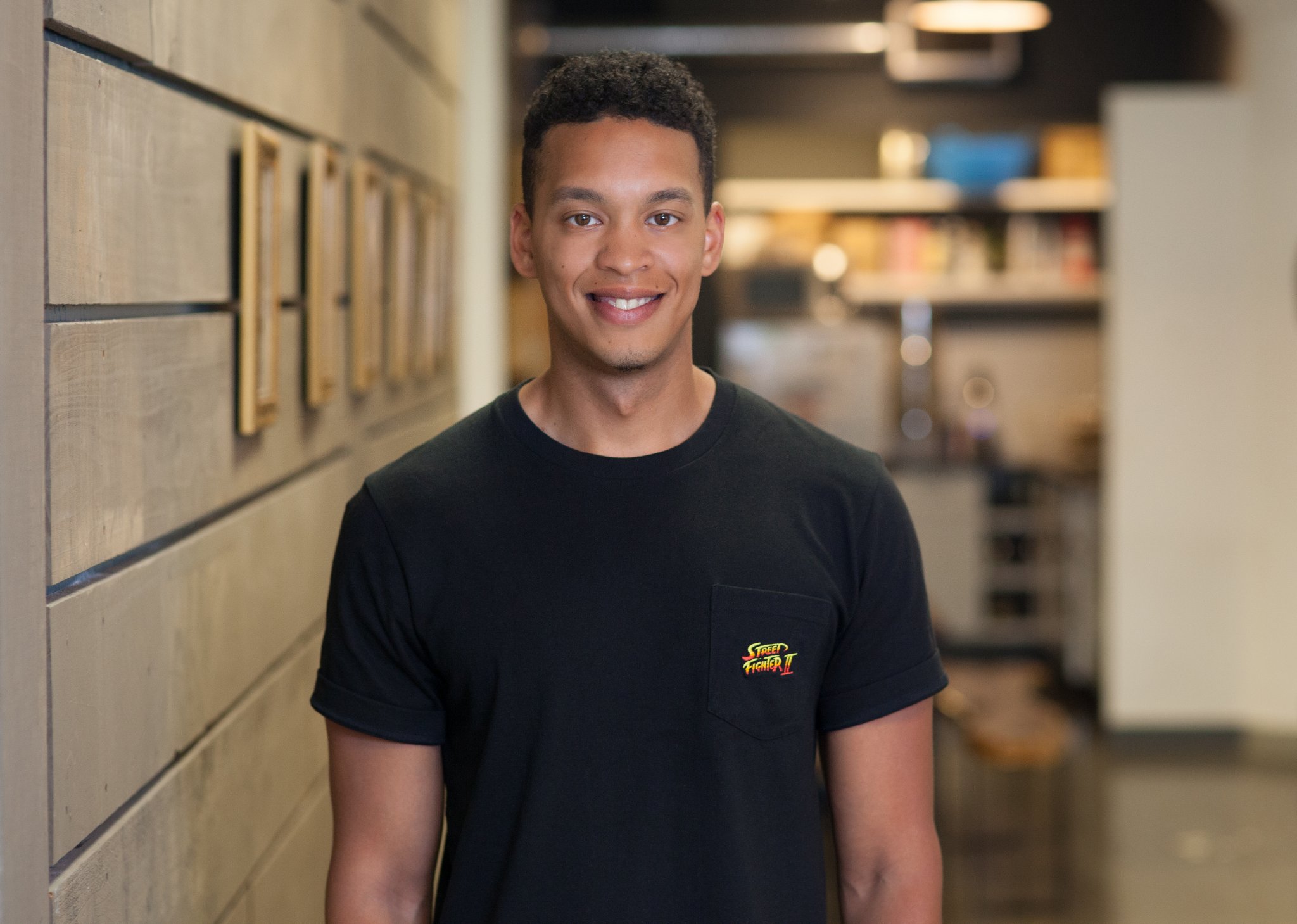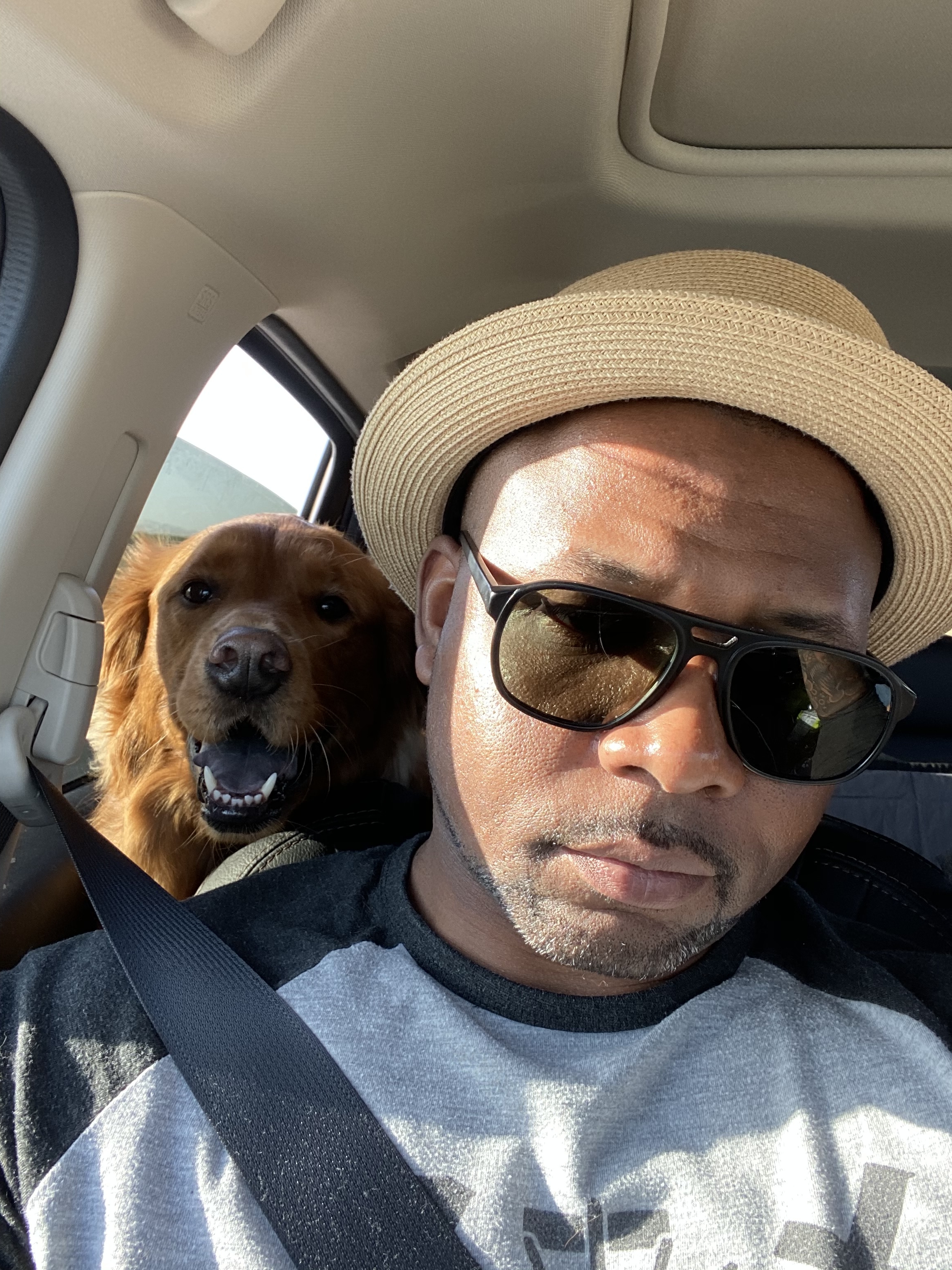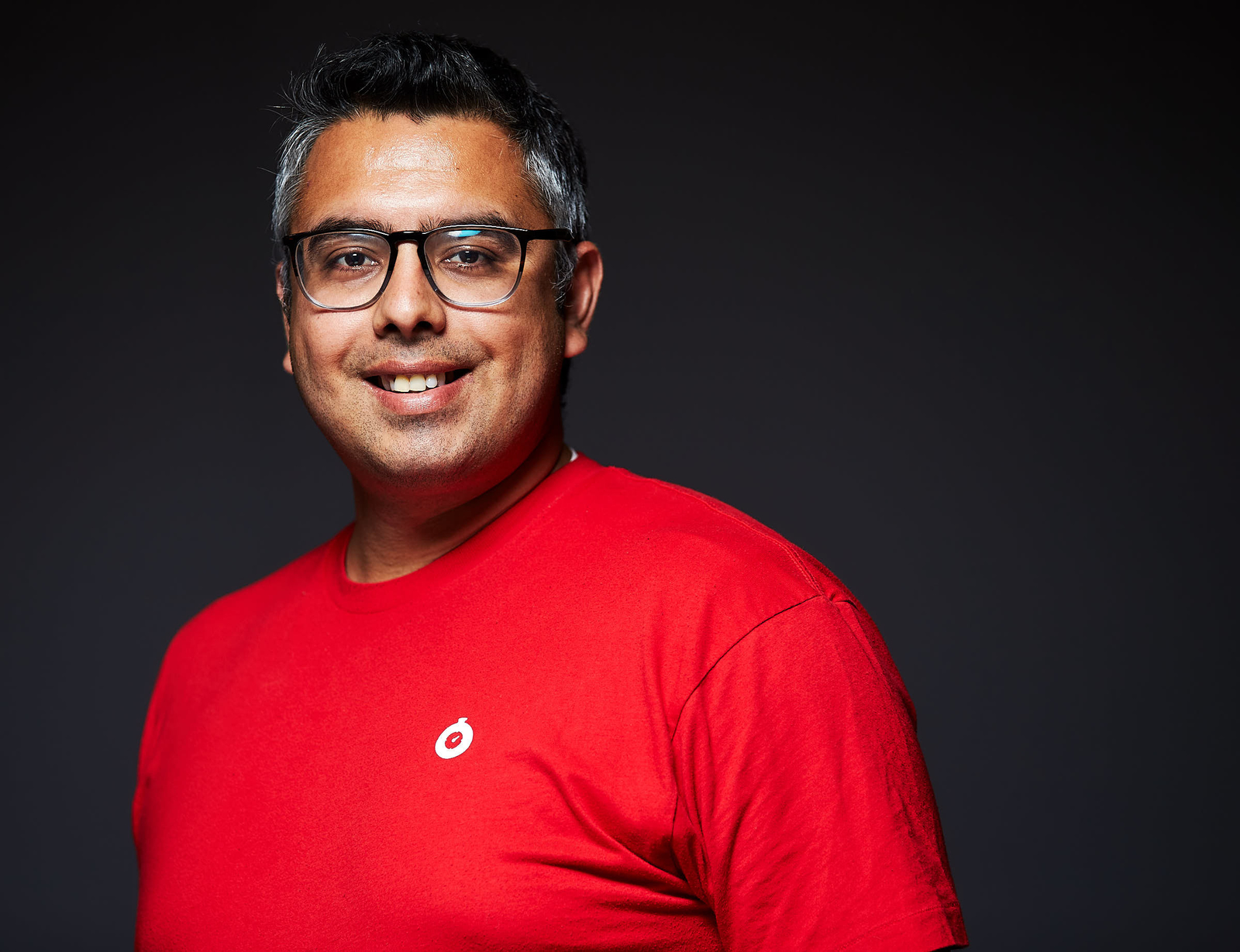Storytime With Managers is a collection of twenty minute conversations where Jennifer Tu finds answers to questions of interest to both established and budding leaders in technology fields. In Episode 14, Anthony Holloway (@techdirtywithme on Twitter / Anthony L Holloway on LinkedIn / deliriouslyraw on Instagram shares how to change the culture on your team in your engineering teams.
Transcript
JENNIFER: Welcome to Storytime with Managers, a podcast by Cohere.
Hi, I’m Jennifer Tu, and I’m here with Anthony Holloway to talk about how to create and change culture on your team. Anthony, can you tell us a little about yourself?
ANTHONY: Sure, Jennifer. First of all, thank you very much for having me. Very grateful that a mutual friend of ours was able to connect us. So, I’m a recruiter, writer, and advocate for underrepresented talent in tech. And currently, I lead Talent Acquisition at Woebot Labs where we’re on a mission to make mental health care radically accessible to everyone. So we’re accomplishing that through our chat bot. You can think of it like a therapist in your pocket and is using things like CBT, Cognitive Behavioral Therapy, NLU, AI machine learning to really help people live happier lives. And prior to Woebot, I was a career coach focused on helping software engineers make successful career transitions. So I’ve kind of played both sides of the table in terms of helping candidates and now recruiting them. And yeah, I’m really excited to be here today.
JENNIFER: Thanks so much for being here. Let’s go ahead and just dive right on in, if that’s all right.
ANTHONY: Yes, let’s.
JENNIFER: If I want to change the culture of a team, where should I start? And does what I do change depending on if I’m brand new to the team or if I’ve been managing it for a while?
ANTHONY: In terms of creating or even changing culture on a team, I would say it starts with two things at least that come to mind. One is, I would start by orienting yourself. When I say orient, I mean really taking inventory of what’s currently happening. I think that happens or that mishap happens a lot when companies are building something, whether it’s a product, an application, and they get too caught up in trying to build a particular feature or solve a particular problem instead of orienting themselves to the user. So that’s the same thing I would do if I were trying to change or improve the culture on a team. I would just try to take as much inventory as I can possible. And that just starts with having conversations with people just like we’re having our conversation right now.
So, if Jennifer’s on my team and there’s five other people. Before I say, “How can I improve the team,” whether it’s the velocity of the team, whether it’s how people get along, I first have to understand you have to meet people where they are. I think most of your listeners and myself can identify with having had a poor manager in your past. And most of those experiences come from that manager not meeting you where you were. Maybe them trying to enforce their will or trying to push forward an agenda even if their intentions were pure. So, I think it starts with orienting yourself, where is the team now, why do we want to change, and then going from there.
JENNIFER: How do you know when you are sufficiently oriented? I feel like sometimes I see some managers who think they have oriented themselves, but they haven’t. And I wonder what can we, as managers, do to make sure that we are fully oriented? Or is it the case that you don’t have to be completely oriented to start?
ANTHONY: What I would suggest is a book. I’d start here. So there’s a gentleman named Jocko Willink. He is a retired Navy SEAL. He was a Navy SEAL for 20 years in a leadership position. And he wrote a book called Extreme Ownership. And it’s this idea that especially as a manager, anything that your team does is your fault. So if the team messes up on something or you gave instructions and someone made a mistake after orienting, you have to – it’s really a mindset shift to assume that everything that your team does, you’re responsible for. And it sounds very oversimplified because it is. But it’s a very mindset shift to say, “Okay. Everything that my team does, I am responsible for.”
So, for example, I am helping my team with interview prep. I’m helping my team with sourcing and recruiting. And it’s actually a very playful thought exercise. Whenever there’s a miscommunication with someone, whether they’re your teammate, whether they’re your manager, just try his thought exercise and treat it playfully and just say, “If I assumed that whatever happened, the miscommunication, the problem was my fault, how might I have prevented it knowing that?” And quite frankly, it’s a mindset shift, like I said. But when you take this playful approach, you actually start noticing something. You start noticing your ego come up in your decision making. You start noticing how your instructions or your communication could have been clearer. So, yeah, to answer your question, once you’re sufficiently oriented, you have to make this mindset shift to assume everything is your fault and then take extreme ownership for everything. And that actually empowers you.
JENNIFER: So, it’s kind of like how we want engineers to take ownership for the product of their work. And something goes down in production, we want them to not necessarily feel bad about it, but to say, “Hey, this is something that I’m responsible for and I’m going to jump in and clean it up.” And so, it’s the same thing of managers need to be responsible for the output of their work. And if their team isn’t changing the way that they want it to, then jump in and say, “Hey, this is my work. I am responsible for this. I need to figure out how to change it.”
ANTHONY: Yeah. And just think about it also from your experience. If you had a manager, say for example, you had a manager and they messed something up, whether it was a meeting that was scheduled and they didn’t show up. And the first thing that, a lot of times, as humans we want to do is sometimes cast blame.
JENNIFER: Yes.
ANTHONY: And just imagine you casting blame on someone and then totally diffusing it by saying, “You know what? This is 110% my fault. This is why it’s my fault. And this is what I’m going to do differently next time.” And if it was genuine, those little micro transactions are where you’re building trust as a manager.
JENNIFER: Yeah. Okay, that makes sense to me. And this is perfect for the next question I want to ask. One question that I hear from a lot of managers is they want to change the culture of their team, and specifically, they want to change their team culture so that their reports take on more ownership or more initiative around what’s going on around them. And I’m wondering, do you have any advice for how someone who wants to take ownership of the problem of their team is not taking as much ownership? How do you start that?
ANTHONY: I guess I can give you an example. And then your audience, and even you and I, we can think about how you can actually apply this. But again, I wanted to mention this Navy SEAL because he gave a great TED talk. And in the TED talk, he spoke about how he was in the Battle of Ramadi, I believe. Iran, Afghanistan, Iraq, it was one of those. I’m forgetting the specific city or province that he was in. But he said that there were several people who got injured on his team and one person actually was killed. And the injuries and the death on his team occurred because of friendly fire.
JENNIFER: Oh, no.
ANTHONY: Meaning the communication was so poor that teammates shot themselves.
JENNIFER: That’s awful.
ANTHONY: Now, as soon as this happened, he had to report to his higher ups and he had to explain. The higher ups came, he had to explain. And he said that given the context of this, anyone else would have been fired. But when he started the meeting off, he said, “You know, I know exactly whose fault this is.” And then he asked his team, “Whose fault is it?” And several different people claimed it was their fault. “Oh, it was my fault because I didn’t flank the side and I didn’t communicate it.” Or another person raised their hand, “It’s my fault because I saw this threat, but I didn’t tell my team about it sooner.” So, he let everyone speak. And then at the end, he just said, “You know what? This is my fault. As a leader, I didn’t communicate what needed to be done. As a result, the communication within the teams broke down and everything that happened today is my fault. But I guarantee you that we’re going to recommit ourselves. This should never happen again.” And what he explained was that one, he didn’t get fired. And two, the accountability on his team went through the roof. Why? Because in that situation, most “leaders” would have blamed the people who actually took the shots. Most leaders would have blamed the people who took the action. But he sat up there with his boss, with his direct reports and said, “This is my fault and this is what we’re going to do to make sure it doesn’t happen again.” And because of that, I mean, trust and accountability just went through the roof.
I don’t have an example as heroic as him in my personal life. But every time I think back to when I’m trying to get a teammate to maybe work on a project or maybe I’m trying to get buy in for something, I’m always like, “Okay, how can I just show this person that I’m committed to serving their needs before mine?” And if you can do that, then you get buy in.
JENNIFER: Yeah. So you might not necessarily want to say ‘it’s my fault’ that you’re not taking ownership, but you do want to take some kind of action that increases the trust that the people that you’re managing have in you.
ANTHONY: Exactly. It’s more so if someone doesn’t understand. It’s like, “Okay, I poorly communicated my expectations, how could I have done that better?” And it’s not on that person. And again, it’s not you do it once, and now everybody’s bought it. There’s hundreds of little micro transactions of trust that happen. And you can think of it, that’s what happens with the friendship. Friends are there for birthdays. Friends are there when you had that breakup. Friends are there when you went to the movies that weekend. And all of those micro transactions, you’re like, “Okay, this friend is here for me.”
JENNIFER: I really like this idea of micro transactions. And I’m wondering, are there examples of ways that managers, especially in engineering, can show these micro transactions?
ANTHONY: Yeah, I think it starts with working the weekly, if you have the weekly one-on-ones effectively. A question that I always ask whether – and this is great for engineers who are introverted and don’t really like to network. Something that I always asks people when I go to events or even just in my team is how can I support you? And consistently ask that of people. And sometimes when you ask that question, maybe in the immediate, you don’t know how you can support that person. But just the gesture speaks volumes. Because we even think about when you go to a networking event. Most people say, “What do you do?” And my first question is always, “What are you working on?” And that leaves it open for someone to tell you about the succulents that they just planted in their apartment or some weird hobby that they have. And now, you’re building trust and you don’t even know what this person does for a living. And then if you end the conversation with, “Oh, that’s great. Is there any way I can help you out? Is there any way I can support you this year?” And again, I’ve found that the gesture speaks volumes. And sometimes support can look like, “Oh, you mentioned that you’re gardening. I just read this interesting article about so-and-so.” And it’s again, micro transaction of genuinely asking how you could support someone.
And then I think where most people fall off and maybe specifically managers is actually like, don’t break your promises. If you ask someone how they can support you and they told you, follow up and do what you said, whether it’s sending an article or booking another meeting. And yeah, I’m like oversimplifying it, but it’s doing going through the [recks] of that. Doing that hundreds of times. And eventually, you’ll build that trust.
JENNIFER: Yeah. I really like that idea of finding the things that people want and then carrying through on them. And it also makes me wonder if maybe the thing to do is always find something, even if it doesn’t do everything. Like maybe someone really wants to go to this week-long training and you don’t have the budget for it, but you get them a video subscription to the presenters, something. Or maybe couple that with a book or find a local smaller training that does the same material but only in one day. Would that be an effective way to create that micro transactions where you’re still finding something, even if it’s not everything?
ANTHONY: I think it’s a start. But again, I think that that leadership, it starts with being of service. It’s not doing it in a way that satisfies your ego. It’s like genuinely, “Okay, Jennifer has this thing going on. She has this podcast. How can I support her genuinely?” Is it microphone recommendations? Is it sending you a guest that could speak intelligently about a particular topic? Yeah, I think just being genuine and authentic in that. And again, it’s exhausting. It’s not easy to put your needs above others. But that’s the bedrock of most successful relationships, whether it’s a manager, whether it’s a significant other.
And it’s also, I think, another point that just came to my mind is also articulating how your goals can actually serve that person. And I think this is best when you’re in a loving relationship with someone and you explain to them, “Maybe we won’t do date night tonight because I need to go to the gym.” And your significant other might say, “Well, I haven’t really seen you all week and I don’t like that. We haven’t spent time all week, and now you’re going to go to the gym?” But if you articulated it in a way where you show what was in it for them, then maybe that could be a better way to be of service. So maybe you say, “Listen, I know we haven’t spent a lot of time together this week. But if I go to the gym, I’m going to release some endorphins. I’m going to break up a sweat, and I’m going to be out in a way better mood and I’m going to be way more present and loving when I get back.” So I know in the interim, it hurts. But like, “Let me go to the gym. I’ll come back and I’ll be a way more present lover.” So I just kind of broke it down to a relationship. But if you’re trying to accomplish something, you have to articulate to the team what’s in it for them if you accomplish your goal.
JENNIFER: Right, that makes a lot of sense.
ANTHONY: And that’s tough. Most of us are thinking about ourselves. I mean, it’s good to be selfish sometimes. You need to take care of yourself. But if you want to enroll people on the journey and you want to get people bought in, you need to articulate why your goals and your aspirations and your actions actually benefit the team. And in a way, you put it through their lens. It’s not through your lens.
JENNIFER: Right. You want to take your context and reassure it from their perspective. So that way, they can see how it fits into their own context.
ANTHONY: Yeah. And I mean, that’s really like sales, marketing, advertising 101. You can’t just sell a feature or a particular product. It’s what’s in it for the customer, the consumer, the user. And the more you can speak to the pain that you’re resolving or the euphoria that they’ll feel when they use your solution, then people are going to be bought in.
JENNIFER: I kind of want to dig in a little bit on this idea a little bit more. One question I have is, what do you do when – going back to the micro transactions and creating this shared context in alignment – what do you do if someone comes to you with, “I want you to support me in this way,” but it doesn’t align with your goals for where the team and the company should be headed. Like maybe they say, I don’t know, “I want to be doing machine learning,” and unlike your company, there is nothing to do with machine learning at your company. Or what if they say, like the earlier example, “I really want this training,” but you don’t have any educational budget. What do you do in those kind of situations?
ANTHONY: In that particular situation, what I would first want to do is – one of the other authors that I really follow and I love is Seth Godin, and he speaks a lot about whether you’re problem solving or you’re trying to support people, just leading with generosity and curiosity. So first, I want to kind of lean in and understand the why underneath that. You can think of it like an iceberg. At the surface, you have, “I want to take this course,” or, “I want to do more machine learning.” But, “Okay, let’s have an open discussion about that. Why is that?” And digging into it more and more. And the fact that you were even willing enough to dig underneath the surface of the iceberg, one, is a great gesture; and two, as you start to unravel that, there might be other ways that can fulfill the nagging deep down why and purpose behind the surface level request. So maybe someone said, “I really want to learn more machine learning or do more machine learning work.” “Okay, why is that?” “Well, I really love solving complex problems and I love the subject matter and where this space is going.”
And then as you mentioned earlier, it’s like, maybe there’s a really complex problem that we can have you work on that doesn’t include machine learning, but will fulfill your desire to work on something that’s complex and requires you to expand a lot of [inaudible] bandwidth. Again, I think you mentioned great alternatives earlier. Maybe there’s a conference that we can sponsor. And even with conferences, for example, one of my good friend, [inaudible], when she was at Dev Bootcamp, she probably called 15 different people, emailed 10 different people. Long story short, while she was in bootcamp, she got GitHub Universe to give us 20 tickets for bootcamp graduates.
JENNIFER: Nice!
ANTHONY: For free.
JENNIFER: Yeah.
ANTHONY: But it was because she was persistent and like, oftentimes our goals, we create our own barriers for what we want to accomplish. Most people might have said, “Well, I’m in bootcamp, I’m already broke. I’m already stressed out. I’m probably eating ramen noodles, just to pay for my bootcamp,” or just save some money because I’m in a large city like San Francisco or New York. But yeah, she really was passionate about it. And lo and behold, they ended up giving those 20 free tickets. That was probably the equivalent of almost $20,000 worth of tickets.
JENNIFER: Wow.
ANTHONY: But they did it because of how she positioned it as – I think they were giving tickets free for students or discount it. Yeah, she probably talked to 10 different people. So, again, with this person that maybe comes to you with a request that you can’t fulfill, who knows what we can really solve? And really, maybe there is a course or maybe there is a conference. Even with conferences, you can volunteer and be able to get free admission.
JENNIFER: Yeah. That’s how I went to my first technical conference was I volunteered in what was called the terminal room.
ANTHONY: Yeah. But it goes back to being of service to your team. If you really spent time with someone and said, “How can I help you grow in this area?” And eventually you introduce them to Jennifer. And Jennifer is like, “Well, I volunteered at my first conference. So I know these machine learning conferences can be expensive. But here’s some that might be good for you. And you can volunteer.” And it’s like now, a person just feels invested in. And the way Seth Godin explains it is enrolling people. So, it’s not about changing people’s minds or getting people to change. It’s about how do you help them participate [inaudible]?
JENNIFER: Yeah. How do you win their hearts and minds?
ANTHONY: Yeah. So, I think it starts there. And again, it’s very easy for us to sit here and talk about it, but the hard part is actually committing to it.
JENNIFER: All right. Anthony, unfortunately, this is all the time we have. Do you have any closing words that you want to share with our listeners?
JENNIFER: Sure. If I’d probably leave your audience with a few things, it would be, don’t forget to thank the people who supported you along your journey to get where you are. None of us get to where we are without the help of others. So thank you to my girlfriend, Tiara. Thank you to a bunch of other people who supported me when I came to the bay. Shout out, Fred, Josh, Trinidad, Teshone, Ife, a bunch of other people that I’m probably forgetting names right now. Oh, Corey Harris, Torin Perez, Mike McNair. The other thing that I would leave your audience with is, I talked about this at Tech Trap House. So a friend of mine, Corey Harris, has an organization that he co-founded with a few others called Tech Trap House to help bridge the gap between underrepresented talent and the tech industry.
And I said it while I was on his panel, it’s not about you. Really, once you get to the essence of your ego and what you want to accomplish in the world, once you are born into this idea that everything that you do in your life, in your career, everything you want to accomplish, it’s not about you. It’s about sharing your unique gifts with the world and spreading joy and love. I mean, that’s very high level. But in everything you do, whether you’re an engineer, whether you’re a recruiter, whether you’re an artist or a performer, it’s not about you. It’s about the world. It’s about the collective. And once you realize it’s not about you, you’ll actually start making way more progress in your career. Synchronicities will start to happen that you can’t explain. Opportunities will come to you that you didn’t expect. Like this one that we’re having today, Jennifer. And yeah, I would say just last shout out to Lesley Toche, Nextplay, another organization trying to bridge the gap between underrepresented talent and tech.
And then for people who want to follow up with me, who want to find me, I would say Anthony L. Holloway. If you search me on LinkedIn, I’m a recruiter. That’s the best place to find me. Slide into my DMs there. But I also am the Chief Editor and I run a blog called Tech Dirty With Me, which is a Medium blog that is trying to create just practical ways for people to flourish at life. You can find me at TechDirtyWithMe on Medium, @TechDirtyWithMe on Twitter and @deliriouslyraw on Instagram.
And the last plug that I have is that on October 1st, I launched an online course. It’s called Get Unstuck & Win the Job You Deserve. It’s meant to help you kind of discover beneath all of it what you really want to do and how to make successful career transitions. Because in the 21st century, with technology and the speed that everything is moving, even if you’re an engineer or a product manager, you still have to make career transitions. And that takes looking at your identity, but also taking a structured approach to how you look for jobs. And I want to end that pain for people who are only applying online and not applying these other practices that I see that work best for finding the job that you deserve. So, thank you for having me, Jennifer.
JENNIFER: Wow, that was beautiful and amazing. Thank you so much for being here, Anthony.
Thanks for listening to Storytime with Managers by Cohere. I’m Jennifer Tu. Our theme music is by Kevin MacLeod, and we are edited by Mandy Moore and the DevReps crew.
If you like this episode, please think about leaving us a review on your favorite podcast listening platform. This can make a really big difference in helping other people find and start listening to Storytime with Managers. Thanks so much.





